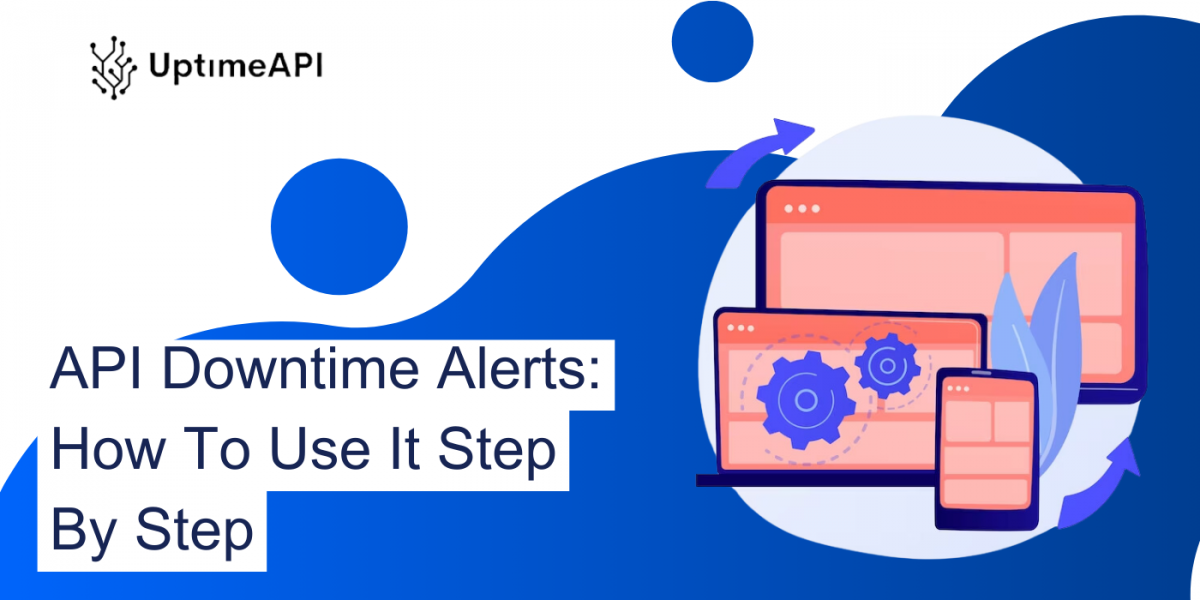In the digital age, where APIs are the backbone of modern applications and services, ensuring their reliability and performance is crucial. API downtime can have detrimental effects on user experience and business operations. To mitigate these risks, utilizing API downtime alerts and monitoring tools like UptimeAPI is essential. This step-by-step guide will walk you through how to effectively use UptimeAPI to monitor API performance and receive timely alerts about downtime.
Step 1: Sign Up for an UptimeAPI Account

The first step in using UptimeAPI is to sign up for an account on their platform. Visit the UptimeAPI website and look for the signup or registration option. Fill in the required details to create your account and log in to access the dashboard.
Step 2: Add API Endpoints for Monitoring
Once you are logged in to your UptimeAPI account, navigate to the dashboard and locate the option to add API endpoints for monitoring. Enter the URLs of the APIs you want to monitor and configure any specific settings or parameters required for monitoring.
Step 3: Set Up Alert Notifications
UptimeAPI allows you to customize alert notifications based on your preferences. Navigate to the settings or alerts section in your dashboard to set up how you want to receive alerts about API downtime. You can choose to receive notifications via email, SMS, or other preferred communication channels.
Step 4: Monitor API Performance
With your API endpoints added and alert notifications set up, UptimeAPI will start monitoring the performance of your APIs in real-time. Keep an eye on the dashboard to view performance metrics, response times, and any alerts triggered due to downtime or performance issues.
Step 5: Receive Downtime Alerts
In the event of API downtime or performance degradation, UptimeAPI will send you instant alerts based on your configured settings. When you receive an alert, log in to your UptimeAPI account to investigate the issue further and take necessary actions to resolve the downtime promptly.
Step 6: Analyze Historical Data
UptimeAPI stores historical data on API performance, allowing you to analyze trends and patterns over time. Use this data to identify recurring issues, track improvements in performance, and make data-driven decisions to optimize your APIs for better reliability and efficiency.
Step 7: Optimize API Performance
Based on the insights and alerts provided by UptimeAPI, take proactive steps to optimize the performance of your APIs. Address any recurring issues, fine-tune configurations, and make necessary adjustments to ensure optimal API performance and minimize downtime.
Step 8: Continuously Monitor and Improve
API monitoring is an ongoing process that requires continuous attention and improvement. Regularly review performance metrics, analyze alerts, and make adjustments to your monitoring settings or API configurations as needed. By staying proactive and vigilant, you can ensure the reliability of your APIs and prevent potential downtime issues.
Conclusion
In conclusion, API downtime alerts are an essential tool for businesses looking to maintain the reliability and performance of their APIs. By following this step-by-step guide on using UptimeAPI, organizations can effectively monitor their API performance, receive timely alerts about downtime, and take proactive steps to optimize performance and minimize disruptions. With its user-friendly interface and customizable alert settings, UptimeAPI empowers businesses to stay ahead of potential issues and ensure seamless operations for their applications and services.

